Disclosure: This article contains affiliate links. We may earn a commission from purchases at no extra cost to you, which helps our travel content.
There's a fascinating parallel between asset diversification and Budapest's ruin bar scene – both transform the overlooked into something of remarkable value. My first encounter with these eclectic venues came during a particularly grueling quarter at work when spreadsheets and forecasts had nearly consumed my identity. Three days into my Budapest escape, I found myself standing in the middle of Szimpla Kert, surrounded by mismatched furniture, psychedelic art, and a palpable energy that felt like cultural alchemy. As someone who spends days analyzing risk-adjusted returns, the irony wasn't lost on me that these bars – built in abandoned buildings left to decay after WWII – represent perhaps the most brilliant ROI in modern hospitality. They've taken Budapest's Jewish Quarter from neglected to nightlife epicenter, all while preserving architectural heritage that might otherwise have been demolished. For the solo traveler seeking authentic cultural immersion without breaking the bank, Budapest's ruin bars offer an unmatched dividend of experience.
Understanding the Ruin Bar Phenomenon
The ruin bar (romkocsma) concept emerged around 2001 when creative entrepreneurs began transforming abandoned pre-war buildings in Budapest's District VII into vibrant cultural spaces. Unlike the polished nightlife venues I've encountered across major financial capitals, these establishments embrace imperfection as their aesthetic foundation.
What makes this scene particularly compelling from an analytical perspective is its organic development model. Rather than high-capital investment and corporate backing, ruin bars evolved through community-driven initiatives and artistic vision. The result is a nightlife ecosystem that feels authentically Hungarian while simultaneously cosmopolitan.
My Tlingit grandmother often spoke about how her people repurposed everything, finding new value in objects others discarded. I see this same philosophy in Budapest's ruin bars – a cultural preservation approach that honors history rather than erasing it. Buildings that survived WWII bombing and decades of Communist-era neglect now pulse with new energy.
From a financial perspective, it's a brilliant adaptive reuse case study. Property that might have required millions in renovation instead generated immediate cash flow through minimal investment and maximum creativity. For travelers, this translates to uniquely atmospheric venues where your forint stretches remarkably far compared to Western European capitals.

💡 Pro Tips
- Visit multiple ruin bars to appreciate their diverse atmospheres – each has its own distinct personality
- Most ruin bars are free entry, so budget travelers can bar-hop without cover charges
- Look beyond the famous Szimpla Kert to discover less touristy options like Ellátó Kert
Timing Your Ruin Bar Experience
As with any investment strategy, timing is everything when exploring Budapest's ruin bars. These venues operate on a distinctly different rhythm than conventional nightlife establishments, and understanding these patterns will significantly enhance your experience.
From my observations across multiple summer visits, ruin bars begin their day as relaxed café-like spaces around noon, gradually transitioning to vibrant social hubs as evening approaches. The sweet spot for authentic local interaction typically falls between 7-9pm – what I call the "pre-tourist window." This is when you'll find young Hungarian professionals stopping by for after-work drinks and conversation.
By midnight, the demographic shifts noticeably toward international visitors, particularly in famous spots like Szimpla Kert. This isn't necessarily negative, but it does change the cultural immersion quotient. During my last visit, I found that arriving at Instant (one of the larger ruin complexes) around 8pm allowed me to secure a comfortable spot in their garden area with my travel journal to observe the venue's fascinating social evolution throughout the night.
Summer weekends see the highest concentration of tourists, while weeknights offer a more balanced visitor-to-local ratio. If your schedule permits flexibility, Tuesday and Wednesday evenings provide the optimal balance between lively atmosphere and authentic local experience. Remember that many ruin bars close surprisingly early by global nightlife standards – around 2-3am – making them compatible with maintaining a reasonable sleep schedule even while traveling.
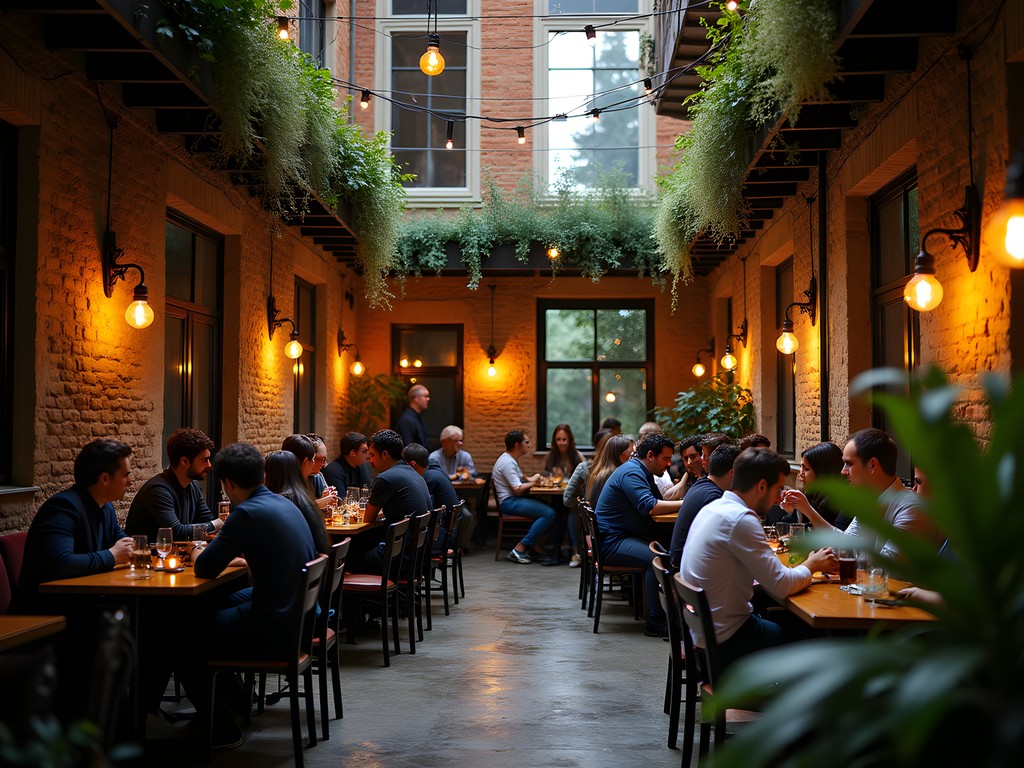
💡 Pro Tips
- Arrive between 7-9pm for the best balance of atmosphere and space
- Tuesday and Wednesday nights offer more authentic local experiences than weekends
- Some ruin bars transform into daytime farmer's markets on Sundays – worth checking schedules
Beyond the Tourist Trail: Hidden Ruin Bars
While Szimpla Kert and Instant-Fogas Complex dominate the guidebooks, Budapest's ruin bar landscape contains numerous lesser-known venues that offer equally compelling experiences with significantly fewer tourists. As someone who values both data and discovery, I've mapped a personal ROI matrix for these hidden gems based on atmosphere authenticity, price point, and cultural immersion potential.
Dürer Kert stands out as a particularly valuable find for music enthusiasts. Located slightly outside the central tourist zone, this venue combines the ruin aesthetic with an excellent live music program focusing on local Hungarian bands. During my visit, I witnessed an incredible folk-rock fusion performance that incorporated traditional instruments I'd never encountered before – a cultural dividend you simply won't find in more mainstream venues.
For those seeking intellectual stimulation alongside their libations, Központ offers regular cultural programming including poetry readings and art discussions, most conducted in Hungarian but with surprisingly inclusive English translations. The crowd skews academic and creative – I struck up a fascinating conversation with a Hungarian economist about parallels between Budapest's post-communist economic transition and Alaska's boom-bust resource cycles.
Perhaps my most treasured discovery was Kőleves Kert, a garden ruin bar whose name translates to "Stone Soup Garden" – reminiscent of the folk tale about community and shared resources. Their seasonal fruit pálinka (Hungarian fruit brandy) served in the garden courtyard under string lights created one of those perfect travel moments where you feel simultaneously far from home yet completely at ease.
Navigating to these less-touristed spots can be tricky, so I rely on my offline maps app which has saved me countless times when wandering Budapest's labyrinthine Jewish Quarter without cellular data.
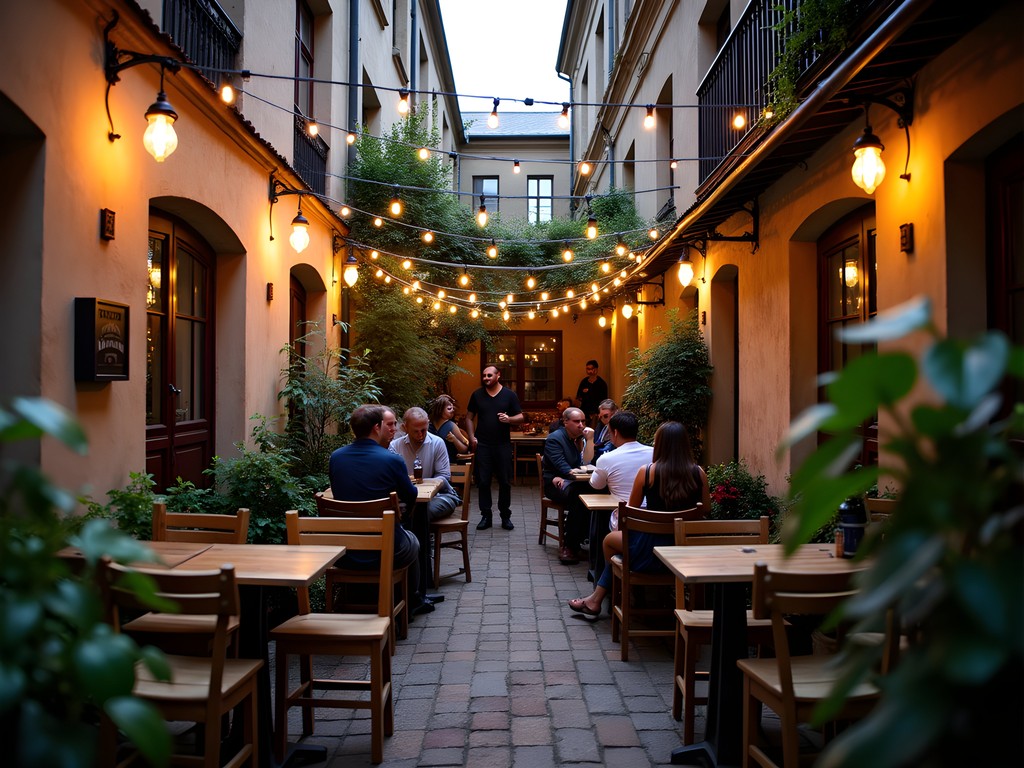
💡 Pro Tips
- Use Google Translate's camera feature to decipher Hungarian-only menus at authentic spots
- Ask bartenders for recommendations – they often know which venues have special events that evening
- Look for places where you hear primarily Hungarian being spoken – a good indicator of local approval
Cultural Etiquette & Mindful Consumption
My Tlingit heritage has instilled in me a deep respect for cultural spaces and community norms – values that translate perfectly to navigating Budapest's ruin bar scene mindfully. These aren't merely drinking establishments but cultural institutions that reflect Hungary's complex history and artistic renaissance.
First, understand that Hungarians generally maintain a more reserved public demeanor than Americans until relationships are established. The boisterous behavior common in US bars can read as disrespectful here. I've found that moderating my volume and observing local interaction patterns before engaging yields more authentic connections. This approach has led to fascinating conversations about everything from Hungarian politics to traditional wellness practices that parallel some of my Tlingit healing traditions.
While ruin bars are budget-friendly by Western standards, they're not immune to tourist price optimization. Order Hungarian beers (try local craft options like Horizont or Mad Scientist) rather than international brands for both better value and authentic experience. Most venues offer fröccs – a refreshing wine spritzer that comes in various ratios of wine to soda water, perfect for pacing yourself through a long evening.
Perhaps most importantly, practice mindful consumption. The casual atmosphere can make it easy to overindulge, but remember that experiencing the cultural nuance of these spaces requires presence. I maintain my wellness practices even while traveling by alternating alcoholic drinks with sparkling water and staying hydrated with my trusty insulated water bottle which keeps water cold throughout long Budapest summer nights.
Finally, respect the spaces themselves. Many contain art installations, upcycled furniture with stories, and architectural elements that have survived decades of history. Treat them with the same care you would a cultural heritage site – because in many ways, that's exactly what they are.
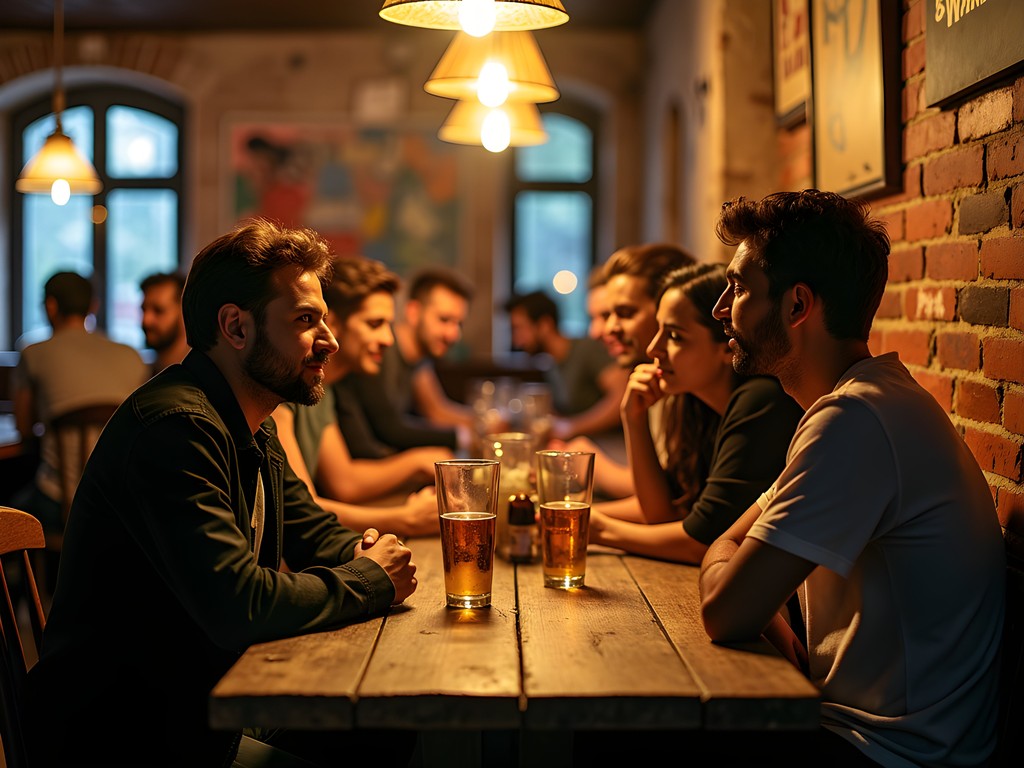
💡 Pro Tips
- Learn basic Hungarian phrases like 'Egészségedre' (cheers) and 'Köszönöm' (thank you) – small efforts go a long way
- Many ruin bars now accept credit cards, but smaller venues may be cash-only – keep some forints handy
- If invited to join a table of locals, it's considered polite to buy a round of drinks as a gesture of appreciation
Navigating Budapest's Night Transport Safely
After years analyzing risk metrics professionally, I've developed a similar framework for evaluating transportation options when exploring nightlife abroad. Budapest presents some unique considerations worth understanding before your first ruin bar adventure.
The city's public transportation system runs surprisingly late, with night buses (marked with 900-series numbers) replacing regular routes after midnight. These buses connect major nightlife areas to accommodation districts until around 4am – a service level that puts many Western capitals to shame. I've found the BKK Futár app invaluable for real-time tracking of these night services, which can sometimes run on modified schedules.
For solo travelers, particularly women, I recommend considering your return journey before heading out. Budapest is generally safe, but like any major city, late-night navigation requires awareness. I always save my accommodation location in offline maps and ensure my phone has sufficient battery by carrying a slim power bank which provides multiple full charges without weighing down pockets.
Taxis remain a reliable option, though I strongly recommend using only licensed services like Főtaxi (the official airport taxi company) or ride-sharing apps like Bolt (Eastern Europe's Uber equivalent). Avoid hailing street taxis near tourist areas, where unfortunately some drivers still employ tourist pricing despite regulations.
Perhaps my most practical discovery was Budapest's MOL Bubi bike-sharing system. The city is surprisingly flat and features good cycling infrastructure. For journeys between ruin bars before midnight, these bikes offer an efficient, economical option while providing a unique perspective on Budapest's illuminated architecture. The system requires initial registration but operates 24/7 and has stations near most popular ruin bars.

💡 Pro Tips
- Download the BKK Futár app for real-time public transport tracking
- Save your accommodation address in Hungarian to show taxi drivers if needed
- Consider staying in District VII (Jewish Quarter) to be within walking distance of major ruin bars
Final Thoughts
Budapest's ruin bars represent a masterclass in cultural reinvestment – taking forgotten spaces and transforming them into vibrant centers of community and creativity. As someone who balances spreadsheets with spiritual practices, I find these venues particularly compelling for their ability to honor history while embracing innovation. They remind me that the most valuable assets aren't always the most polished ones. Whether you're seeking authentic cultural immersion, budget-friendly nightlife, or simply spaces that tell stories through every mismatched chair and weathered wall, Budapest's ruin bars deliver remarkable returns on your invested time. I encourage you to approach them not just as places to drink, but as living museums of urban resilience and creativity. And perhaps, like me, you'll find that these eclectic spaces offer something more valuable than conventional nightlife – moments of genuine connection across cultures that appreciate rather than appropriate heritage. What investment could possibly yield better dividends than that?
✨ Key Takeaways
- Arrive early (7-9pm) to experience ruin bars alongside locals before tourist crowds peak
- Explore beyond famous spots like Szimpla Kert to discover hidden gems with more authentic atmospheres
- Practice mindful consumption to fully appreciate the cultural and historical significance of these spaces
📋 Practical Information
Best Time to Visit
Summer (June-August) when garden areas are open and streets are lively
Budget Estimate
$30-50 per night including drinks and transportation
Recommended Duration
2-3 nights minimum to explore different venues
Difficulty Level
Intermediate



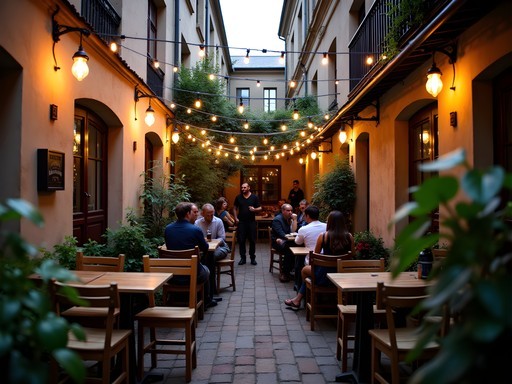
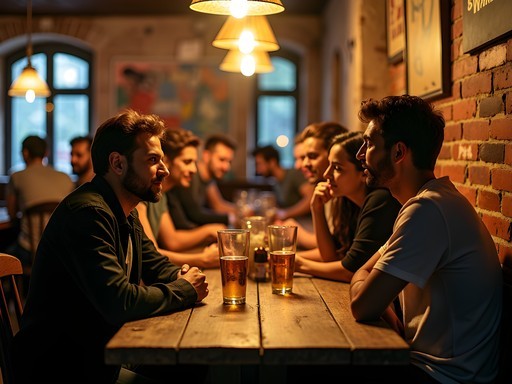






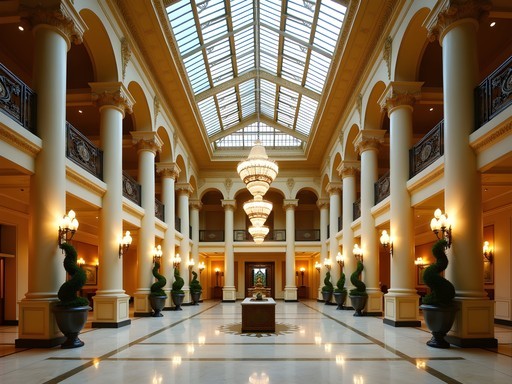

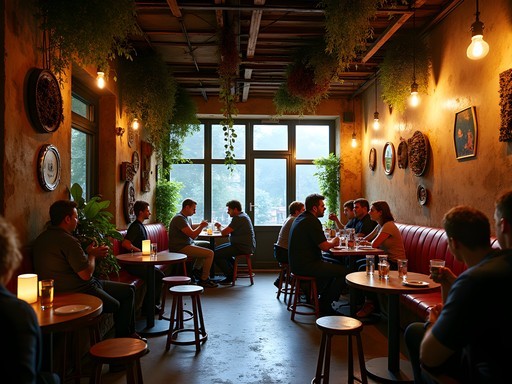
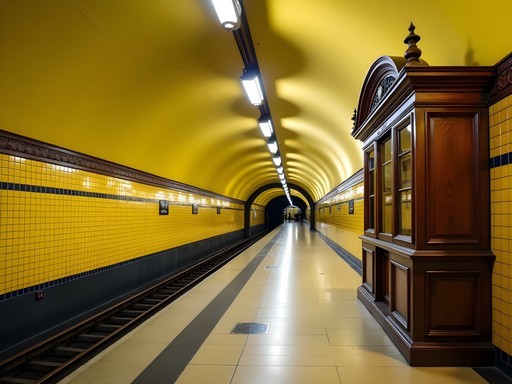
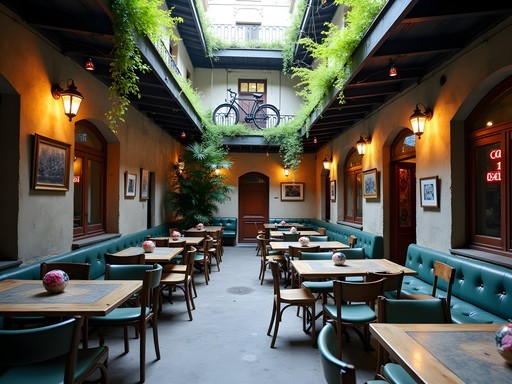
Comments
Bryce Diaz
Great write-up on the ruin bars! After spending a month in Budapest earlier this year, I'd add that these spots are also amazing for meeting locals if you go on the right nights. Many have special events like swap meets, film screenings or community dinners that attract more residents than tourists. Grandio and Anker't host some fantastic cultural events. Also, if you're into photography, go during daylight hours first - the bartenders are usually setting up and don't mind if you take photos of the incredible interiors without crowds. The lighting and details are fascinating. And don't miss the Jewish Quarter beyond just the bars - the street art and history provide important context for understanding how these spaces came to be.
travelexplorer7647
Thanks for the photography tip! I'm a hobby photographer and would love to capture these spaces without crowds. Do you have a favorite ruin bar for interesting visuals?
Bryce Diaz
Definitely check out Fogas Ház for visuals - fewer tourists know about their upper floors which have some incredible installations. Also Instant has amazing surreal elements if you can get in before the evening crowds!
tripdiver
Just booked tickets to Budapest for November after reading this! Can't wait to check out these spots!
vacationstar5716
Is it worth visiting if you don't drink alcohol? Do these places have non-alcoholic options?
nomadqueen
Absolutely! I had friends who don't drink and they loved the atmosphere. Most places have great lemonades, coffee, and mocktails. The people-watching and decor alone are worth it!
Taylor Moreau
Having visited Budapest quarterly for business over the past decade, I've witnessed the remarkable transformation of the ruin bar concept. Riley's point about timing is crucial - I typically recommend clients visit between 5-7pm to experience the architectural charm before the evening crowds. For those seeking a more refined experience, Mazel Tov offers an excellent balance between the ruin bar aesthetic and upscale dining. Their Middle Eastern cuisine is exceptional, and the reservation system prevents the overwhelming crowds found elsewhere. One practical note: many of these venues are cash-only or have minimum card payment requirements, so come prepared. The Budapest Card also offers discounts at select locations if you're planning an extended stay.
citywanderer
Mazel Tov looks gorgeous in photos! Is it much more expensive than the other ruin bars?
Taylor Moreau
It is indeed more expensive, but still quite reasonable by Western European standards. A full meal with drinks will cost around €25-30 per person, whereas at other ruin bars you might spend €15-20 for comparable quality.
Fatima Sims
Riley, this is such a comprehensive guide! I visited Budapest last winter and discovered that ruin bars have a completely different vibe in cold months - they transform into cozy hideaways with mulled wine and local spirits to warm you up. One tip I'd add for winter visitors: bring a pocket guidebook since Google Maps battery dies quickly in the cold and these places can be tricky to find! My favorite memory was stumbling into a tiny unmarked ruin bar where a local jazz quartet was playing. The bartender noticed I was alone and introduced me to other travelers. By midnight, we were a group of 8 from different countries sharing travel stories. That's the magic of Budapest's ruin bars - they're social catalysts in the best possible way.
summermood
Great article! How safe is it for solo female travelers to explore these ruin bars at night? Planning a trip in October and definitely want to check them out but not sure about going alone.
Fatima Sims
I went solo last year and felt completely safe! Budapest has great public transport that runs late, and the popular ruin bar areas are well-lit and busy. Just use the same common sense you would in any city. I made friends at my hostel and we went together the first night, then I felt comfortable going back on my own after that. The locals were super friendly too!
summermood
Thanks Fatima, that's really reassuring! Maybe I'll try the hostel approach too.
travelexplorer7647
These photos are incredible! Love the weird art installations hanging from the ceilings!
nomadqueen
This post brought back so many memories! Spent 2 weeks in Budapest last summer and the ruin bars were absolutely the highlight. Szimpla Kert was mind-blowing with all the random decorations, but I actually preferred some of the smaller spots mentioned in the 'Beyond the Tourist Trail' section. Ellátó Kert had such a chill garden vibe and way fewer tourists. Pro tip: go on weeknights around 8pm if you want to actually get a seat and have conversations without shouting. The Hungarian palinka is dangerous stuff though - proceed with caution! 😂
tripdiver
Ellátó Kert was my favorite too! Did you try their homemade lemonades?
nomadqueen
Yes! The elderflower one was amazing. Perfect after walking around in the heat all day.
summerperson
Just got back from Budapest last week and followed some of these tips! Can confirm that timing is EVERYTHING. We went to Szimpla at 4pm on a Wednesday and had the place almost to ourselves - could actually appreciate all the weird art and decor. By 8pm it was packed with tour groups. Also found this amazing tiny place called Kisüzem that felt more like a neighborhood bar where we ended up chatting with locals all night. The bartender there told us ruin bars are actually controversial with some locals because of noise and tourism issues. Definitely felt the tension between preservation and commercialization that Riley mentioned.
escapelover
Great post! Heading to Budapest next week - is it worth bringing a proper camera or just stick with phone pics in these dark bars?
summerperson
Phone is fine for most places! I brought my mini tripod for long exposures at Szimpla which worked great for capturing the vibe without flash. Most places are pretty dark though.
Venture X
Premium card with 2X miles, $300 travel credit, Priority Pass